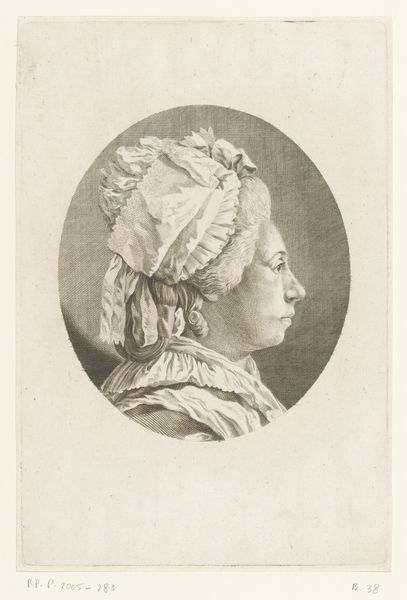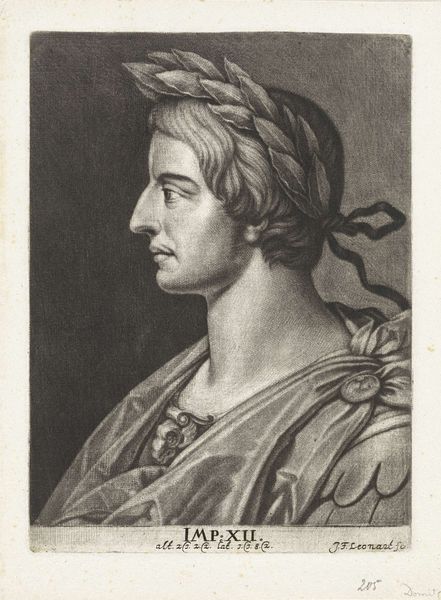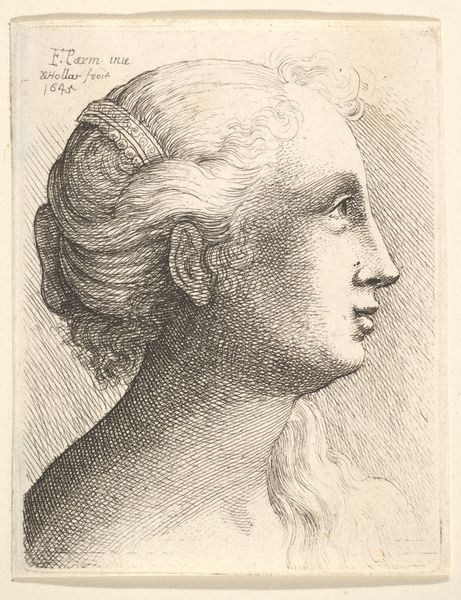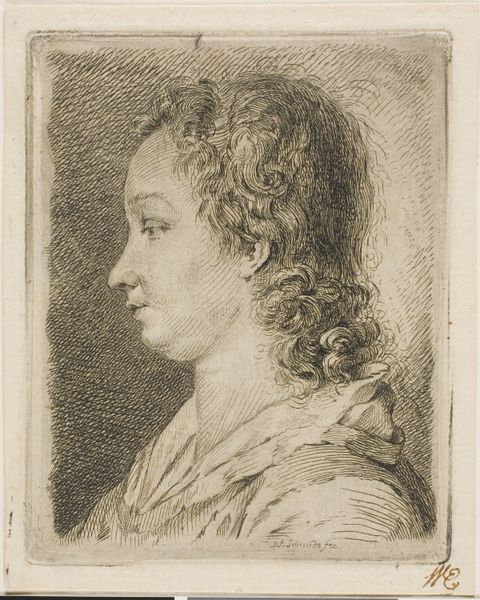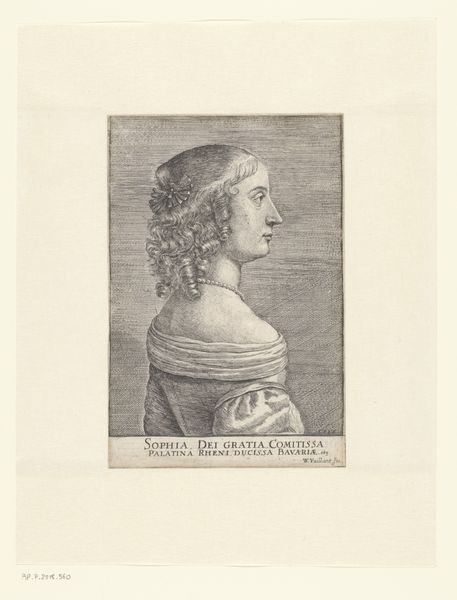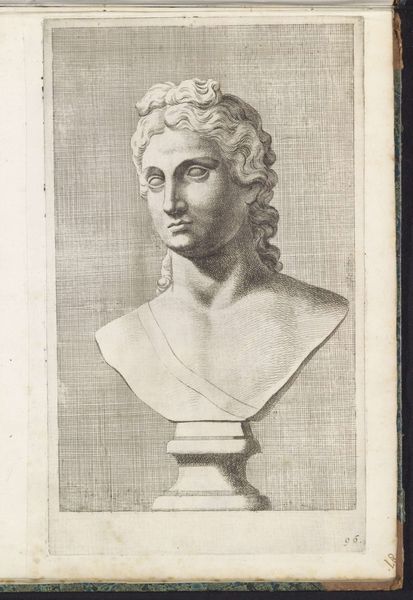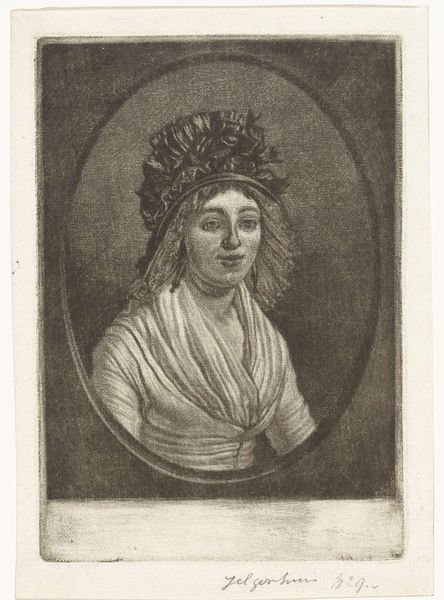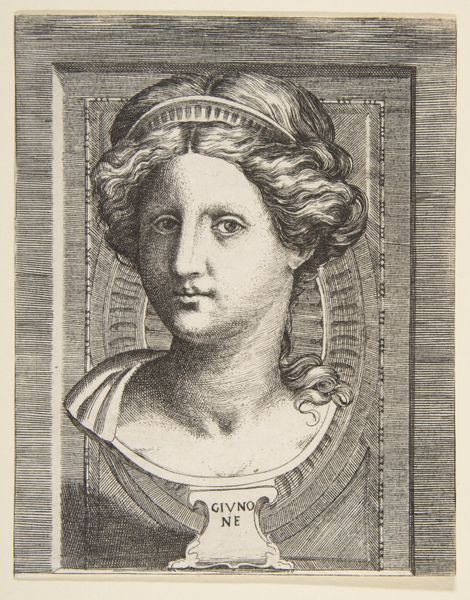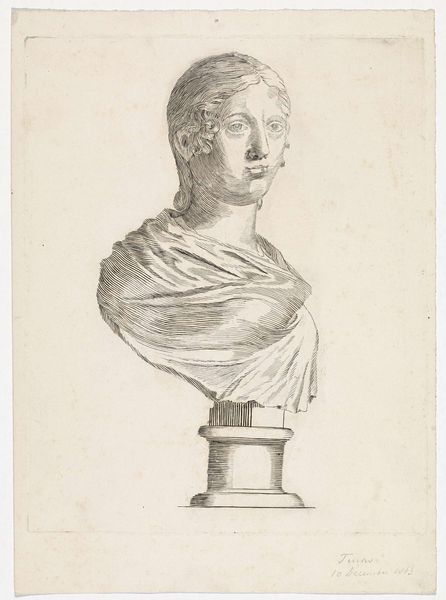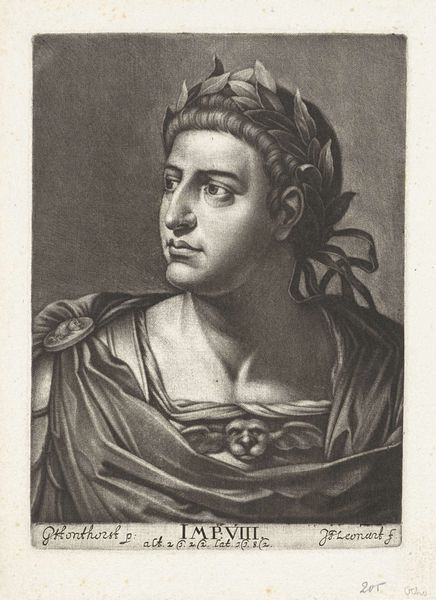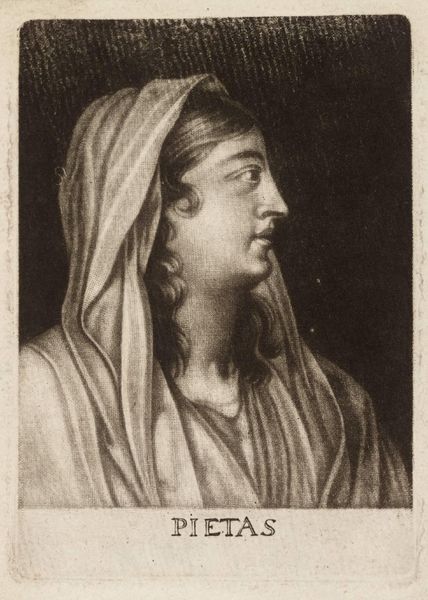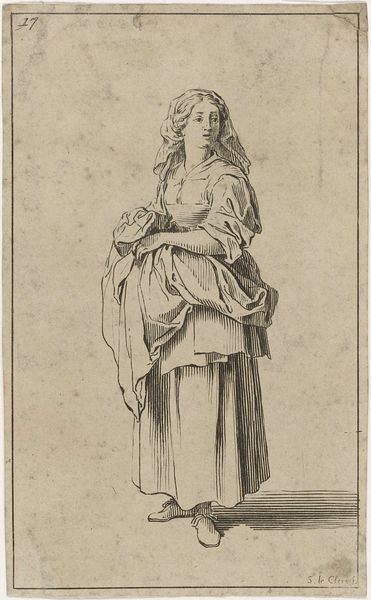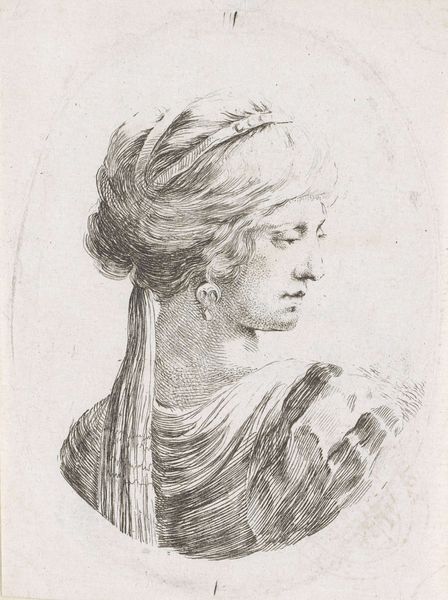
print, engraving
#
portrait
#
baroque
# print
#
form
#
line
#
engraving
#
realism
Dimensions: height 200 mm, width 171 mm
Copyright: Rijks Museum: Open Domain
Hendrik van Limborch created this etching of an unknown woman in the 18th century. Note the headscarf, which at first glance, may appear merely as a piece of fabric. But consider its deeper resonance. Throughout history, head coverings have been imbued with complex layers of meaning. From ancient Roman veiling practices symbolizing modesty and virtue to the turbans worn in the Ottoman Empire denoting status and religious identity, these textiles are never just cloth. They are powerful visual cues, signaling a woman's role, status, and connection to cultural norms. The echoes of these ancient gestures ripple through time. The headscarf, while shifting in style and purpose, continues to carry cultural weight. Whether it is a symbol of piety, resistance, or fashion, its presence in art engages viewers on a deeply subconscious level, triggering a cascade of associations linked to memory, identity, and societal expectations. These symbols aren't fixed; they evolve, resurface, and take on new meanings in different historical contexts.
Comments
No comments
Be the first to comment and join the conversation on the ultimate creative platform.
